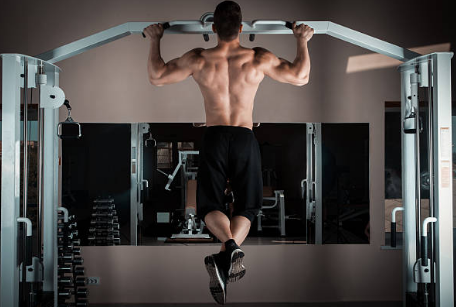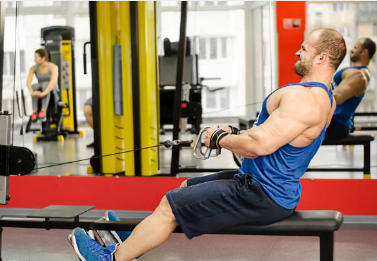Are you ready to unlock a powerful, sculpted upper back? If so, the Back Wings Exercise should be a cornerstone of your workout routine. This exercise targets the muscles between your shoulder blades—primarily the rhomboids, middle/lower trapezius, and posterior deltoids—creating that sought-after “wings” effect: broad, defined musculature that improves posture, strengthens your pull movements, and gives an aesthetic “V” shape. In this post, we’ll cover why this exercise is essential, how to do it effectively, variations to keep things fresh, and SEO-optimized keyword variations to help your site attract more traffic.
Why You Need Back Wings Exercise
- Improved Posture & Back Health
Strengthening the muscles of the upper back helps counteract the rounded shoulders and forward head posture caused by desk work and screen time. - Enhanced Pulling Power
Whether you’re deadlifting, rowing, or doing pull-ups, a strong upper back is vital for generating force and maintaining form. - Injury Prevention
A stable and strong mid-back deflects undue stress from the shoulders and neck, reducing injury risk. - Aesthetic Results
Defined “wings” produce a broader silhouette and more chiseled appearance.
Anatomy Snapshot
- Rhomboids (Major & Minor): Retract (pull together) the shoulder blades.
- Middle/Lower Traps: Help retract and depress the scapula.
- Posterior Deltoids & Infraspinatus/Teres Minor: Support shoulder extension and external rotation.
- Erector Spinae & Rotator Cuff (stabilizers): Maintain posture and stabilize the shoulder joint.
Back Wings Exercises
Equipment Needed:
- Resistance band, dumbbells, cable machine, or TRX.
Resistance Band Version Back Exercises
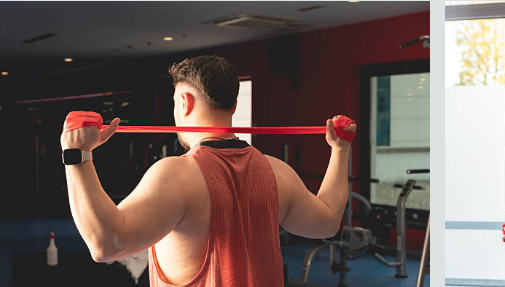
- Anchor a resistance band at chest height.
- Stand facing the anchor point, feet shoulder-width apart.
- Hold the bands in each hand, palms facing each other.
- Step back to create tension, extend your arms forward.
- Keep a soft bend in your knees, chest up, spine neutral.
- Retract your shoulder blades and pull your elbows straight back past your torso.
- Squeeze the muscles between your shoulder blades at the end of the movement.
- Slowly return to starting position under control.
- Repeat 10–15 reps for 3–4 sets.
Key Cues:
- Lead with your elbows.
- Don’t shrug—depress your shoulders.
- Maintain tension throughout.
- Exhale on the concentric (pull) phase, inhale on the eccentric (return).
2. Dumbbell Back Wings Exercise
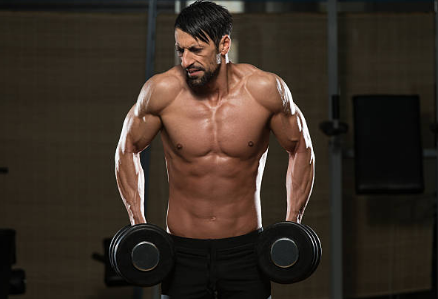
Best For:
Building muscle mass and control
How to Perform:
- Hold a dumbbell in each hand, bend forward at the hips (~45° angle).
- Keep a slight bend in your elbows and lift the weights out to the sides.
- Focus on squeezing the shoulder blades at the top.
- Slowly return to the start position.
Tips:
- Use moderate weight with slow tempo (3–1–3).
- Avoid swinging or using momentum.
- Great for posterior delts and scapular stabilizers.
3. TRX Back Wings (Reverse Fly)
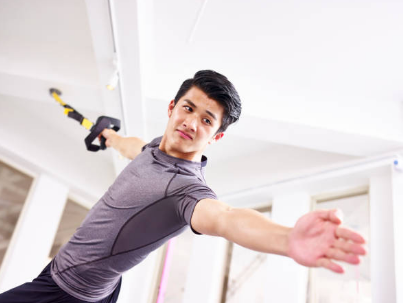
Best For:
Stability, core activation, functional strength
How to Perform:
- Set TRX straps to mid-length.
- Lean back holding handles, arms extended forward.
- Pull your arms apart in a reverse fly motion, keeping body in plank alignment.
- Squeeze upper back muscles, control return.
Tips:
- Adjust your foot position to make it easier/harder.
- Focus on form and control over speed.
- Enhances balance, coordination, and posterior chain strength.
Quick Comparison Table
| Variation | Focus Muscles | Best Use Case | Equipment Needed |
|---|---|---|---|
| Resistance Band | Rhomboids, Mid Traps | At-home, Beginners | Resistance Band |
| Dumbbell | Rear Delts, Rhomboids | Strength, Hypertrophy | Dumbbells |
| TRX | Posterior Chain, Core | Functional Fitness | TRX Straps |
Variations to Maximize Progress
- Band Intensities: Use heavier or lighter bands for progression.
- Seated Cable Row (Wide Grip): Focus on upper back engagement via scapular retraction.
- Dumbbell Bent-Over Flys: Hinge at the hips, arms wide, squeeze at peak contraction.
- TRX Reverse Fly: Adjust body angle to alter difficulty and improve balance.
- Single-Arm Cable Row—High to Mid: Great for unilateral strength and posture control.
- Machine Reverse Fly: Beginner-friendly, isolates the rear delts.
Programming & Frequency
- Bigger Goals (e.g. muscle hypertrophy): 3–4 sets of 8–12 reps, heavier resistance
- Endurance / Rehab Focus: 2–3 sets of 15–20+ reps, lighter weight
- Weekly Frequency: 2–3 times per week, with at least one rest day between sessions
Sample Weekly Setup:
- Day 1: Back Wings + Bent-over Rows + Pull-ups
- Day 3: Back Wings + Face Pulls + Dead Bug/Core work
- Day 5: Back Wings + Dumbbell Fly Variations + Lat stretches
Pro Tips
- Warm-Up First: 5–10 minutes of light cardio (rowing or arm circles) plus band shoulder warm-ups.
- Mind–Muscle Connection: Visualize contracting those “wings” during each rep.
- Tempo Training: Use a 2–1–3 tempo (2 sec pull, 1 sec pause, 3 sec return) to increase time under tension.
- Avoid Compensations: Keep your neck neutral and avoid using momentum from the biceps.
- Track Progress: Log resistance, reps, and sets weekly for steady advancement.
Common Mistakes & Fixes
| Mistake | Why It Happens | How to Fix |
|---|---|---|
| Shoulders shrugging | Over-engagement of upper traps | Actively depress shoulders, keep chest up |
| Elbows flaring | Engaging the wrong muscles | Keep elbows close and pull in line with ribcage |
| Bouncing through reps | Poor control of movement | Slow the eccentric phase and reset for each rep |
| Leaning too far forward/back | Loss of midline spinal alignment | Hinge at hips, maintain neutral spine, brace core |
Read More About Back Workout
Ultimate Back Workouts on a Pull-Up Bar:
13 Best Stretches for Lower Back Pain Relief
Avoid These Exercises That Hurt Lower Back

